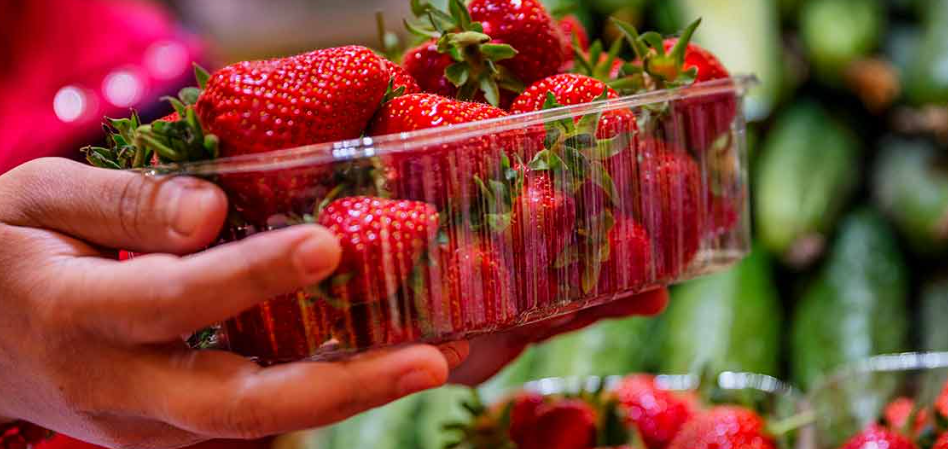Strawberries are among the most beloved fruits. They are loved for their juicy and sweet flavor. It is so rewarding to grow your own organically to make it a reality of your enjoyment of this fruit. This guide will walk you through step by step from selecting the best varieties to harvesting your organic homegrown berries.

Step 1: Choose the Right Strawberry Variety
There like any fruit in the garden, strawberries also come in many varieties. The strawberry varieties fall under 3 major categories: June-bearing, Ever-bearing, and Day-neutral strawberries.
1. June-Bearing Strawberries
This type of strawberry typically bears fruit in June. This follows the flowering stage which happens during spring. The following are the common variaties
- ‘Allstar’
- ‘Earliglow’
- ‘Honeoye’
- ‘Jewel’
- ‘Lateglow’
- ‘Surecrop’
2. Ever-Bearing Strawberries
Everbearing strawberries bear fruits in late spring and late summer. The common varieties under this category are:
- Ft. Laramie’
- ‘Ogallala’
- ‘Ozark Beauty’
This type of strawberries provides smaller harvests over a longer period of time.
3. Day-Neutral Strawberries
These types of strawberries are regarded as improved everbearing-type strawberries. The day length does not strongly influence them. These varieties perform well during the cooler seasons of the year, but they do not do well during the hot seasons.
Day-neutral strawberries are known for their long period of harvest. Can get fruits almost all seasons.
Step 2: Choosing the Right Location
You can choose a well-lit location for your Strawberries. Strawberries thrive in full sunlight, about 7 hours per day.
Choose a well-drained and slightly acidic (pH 5.5-6.5) soil for your strawberries. Compost and organic matter can help in amending the soil PH if it is not ideal.
Step 3: Preparing the Soil
The immediate step before planting planting your strawberries is to prepare your soil.
First, loosen your soil with a hoe or tiller. Make sure to break any clods and remove weeds from your beds.
If the PH of your soil is not favorable, amend it by the use of compost and/or rich organic matter.
Step 4: Planting Strawberries
- Spacing: Space your strawberries 30-45cm apart and 45-60cm between rows. 60cm will give them humble room to spread out.
- Planting Depth: Plant your strawberry seedlings so that the whole root is under the soil. If you plant too deep, the plant may rot and die eventually.
- Watering: Ensure you water your strawberries well after transplanting them. Ensure that the soil has good moisture. Make sure to avoid overwatering.
Step 5: Caring for Your Strawberry Plants
Tender care for the transplanted strawberries is necessary to ensure that they are healthy and free from the stress of disease. Strawberries only require low maintenance and the careful consideration of the following will ensure that the harvest is successful.
1. Watering
- Consistency is key: Strawberries thrive well under regular watering. ensure that you Water your strawberries regularly.
- Avoid overhead watering: Avoid overhead irrigation if you depend on irrigation. otherwise, rain water can just be fine.
2. Fertilizing (Organic Manure)
- While transplanting, ensure to add enough compost or any rich organic matter. Strawberries thrive well with balanced fertilizers. In this case, compost can supply all the nutrients needed by the crop.
3. Mulching
Any organic matter should be aware of the benefits of mulch in organic strawberry gardening. The following are the very common benefits of mulching.
- Helps to conserve soil moisture.
- Helps to regulate the soil temperature
- Keeps weeds at bay.
4. Pruning
In order to keep strawberries healthy and thriving, make sure to remove runners in order to help the plant focus on fruit formation. In addition, remove all dead or yellowing leaves to increase air circulation which in turn helps to reduce disease.
Step 6: Preventing Pests and Diseases
Strawberries in most cases thrive without being affected by disease or pests. If your soil is rich and healthy, you may never experience disease in your strawberries.
- Fungal Diseases: To prevent fungal infections including Powdery mildew and gray mold which are common in humid conditions, make sure to remove excess or dying leaves to improve air circulation. In addition, try to use drip irrigation rather than overhead irrigation.
Step 7: Harvesting Strawberries
Knowing when to harvest is crucial for enjoying the best flavor. Here’s what to look for:
- Col: Strawberries should be fully red before you pick them. Partially ripe strawberries won’t develop full flavor after picking.
- Size and Shape: A mature strawberry is typically about 1-2 inches in diameter and firm, without being too soft or mushy.
- Harvesting technique: Gently pinch the stem just above the berry to avoid damaging the plant.
Typically, June-bearing strawberries will produce their main crop in early summer, while ever-bearing and day-neutral varieties will produce throughout the growing season.
Step 8: Extending the Growing Season
If you live in a region with a short growing season, you can extend it by:
- Using row covers: Lightweight row covers can protect strawberries from frost in early spring and late fall.
- Growing in containers: Moving strawberry containers indoors or into a greenhouse during the colder months can help extend your harvest.
Step 9: Storing and Preserving Your Strawberries
Freshly picked strawberries are best enjoyed within a few days, but they can be preserved for longer use:
- Freezing: Wash and hull the strawberries, then freeze them in a single layer before storing them in a freezer bag.
- Canning: Make strawberry jam or preserves to enjoy your harvest year-round.
- Drying: You can also dry strawberries using a dehydrator or an oven set to a low temperature for snacks and baking.
Conclusion
Growing strawberries at home is a fun and satisfying project that can yield delicious results. Whether you have a large garden or a small balcony, there’s always room for a strawberry patch. By following these steps—choosing the right variety, preparing the soil, planting properly, and caring for your plants—you’ll be able to enjoy sweet, homegrown strawberries all season long. Happy gardening!
